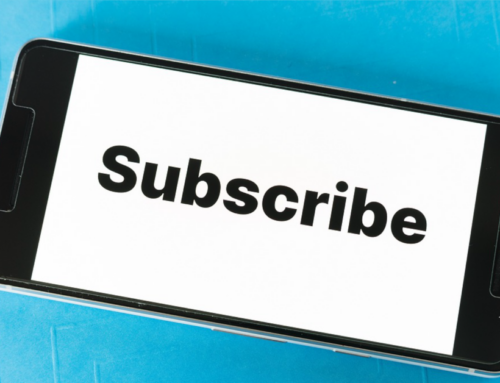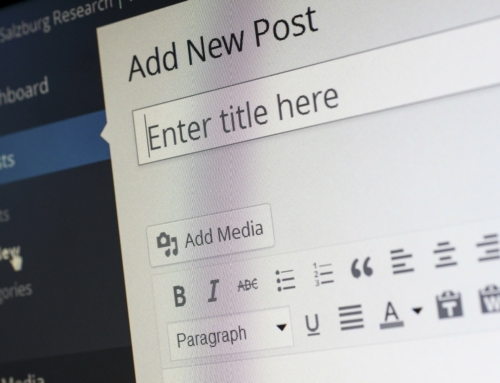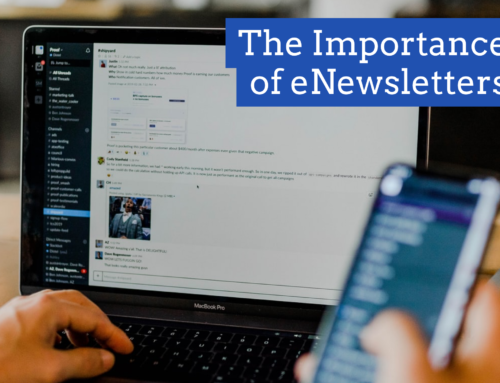
Last month, we blogged on “The Importance of Email Newsletters” with particular emphasis on eNewsletters that are distributed to clients and prospects. This post will focus on professional writing for internal communications and the need for an email newsletter for employees. With so much activity at work and so many distractions (from social media feeds to the water cooler gossip), an email newsletter remains an important tool for keeping your team in the know. Critical elements include the eNewsletter’s quality writing and timeliness.
First of all, yes, an internal newsletter is still important to businesses. Unless you have only two or three employees who office together and talk regularly, it’s important to communicate with your staff. An email newsletter is a great resource for pulling together employees, keeping them informed and engaging staff in your organization.
Emphasize Your Culture
You’ve built a business with a defined culture, whether you carefully studied and molded that culture or it developed by default. Your internal newsletter reminds staff of the positive reasons for them to be there. This also helps your team understand the company values, which in turn helps them feel included.
Engage Your Employees
“The sad fact today is that only 30 percent of employees nationwide are engaged, committed and enthusiastic about their work. The other 70 percent – and that includes managers, executives and professionals as well as lower-level employees – are either not engaged or, worse, actively disengaged, according to research by the Gallup organization of millions of American workers.”1 Research shows that engaged employees are more passionate about their work and are willing to put in extra effort to deliver a job well done. Who wouldn’t want a team of these people?
When your leaders listen to employees and communicate with all employees through a newsletter, you can really bolster your team. Every employee receives the email, so each receives the same information at the same time. This avoids the appearance of playing favorites when some people hear the news first. It also tears down the walls between the leadership and the broader team.
Celebrate Wins, Birthdays and Anniversaries
Everyone appreciates a congratulations. Tracking team members’ start dates at your company and their birthdays are fairly simple. As new employees come on board, add their start date and birthday to a document or spreadsheet that captures this information, organized by month. That way, when you’re drafting your eNewsletter, you have one source to check for the birthdays and anniversaries of the upcoming month.
The eNewsletter is also a great space to tell your company about new clients won. Regularly seeing mentions of new clients reassures employees of more work in the pipeline. It also allows team members to see the types of clients being onboarded, which can motivate them to win other similar customers. Celebrate frequently.
Share News
Won an award? Hired a new employee? Launching a new product or service? Share your company news with your employees before you share it publicly. It’s another way to keep your team in the loop. You can also share press releases so that your internal team sees how news is being communicated externally, minimizing surprises. Your team will love reading about both your organization’s awards as well as rewards and recognition given to staff members. (John ran the half marathon in record time and Israel earned another certification. Great job!) Include updates on any community involvement that’s supported by your company to remind staff of your philanthropic efforts and encourage gratitude.
Another advantage of an email newsletter is that people can file the information in an email folder for future reference. Since all employees should receive (and read) the newsletter, this prevents folks from saying they didn’t know something or “didn’t get the memo”.
By distributing your internal newsletter on a regularly scheduled cadence (for instance, the first Monday of each month), employees know when to expect it. If the eNewsletter publishes important dates and information and is well written, your team will develop the habit of reading the internal communication and will stay well-informed. When their positive, well-connected outlook influences prospects and customers, you’ll be even happier that you committed to this important internal communication tool. Professional writing for internal communications can have a great impact.
For more tips on social media for business, visit our blog frequently and subscribe to our monthly eNewsletter. Email addresses are never sold or shared.
- “A Disturbing 70 Percent of Employees are NOT Engaged in their Jobs” www.grfcpa.com.










